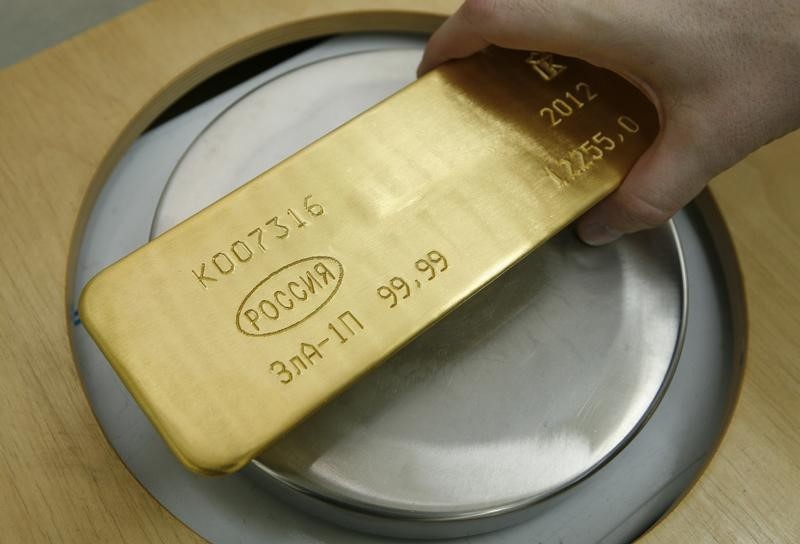Investing.com — In August 2024, prices reached record highs of over $2,500. Despite this, UBS analysts believe that the gold market is not overvalued.
The analysts take into account macroeconomic factors, investor positioning and market dynamics and conclude that there is potential for further price increases.
The recent rally in gold prices is largely due to a favorable macroeconomic environment. UBS analysts point to several factors supporting the precious metal’s rise.
“Fed expectations – with UBS economists now predicting three 25 basis point rate cuts this year – the decline in real rates and a weaker US dollar have all been positive for gold prices,” the analysts said.
Such monetary easing is expected to strengthen gold prices by lowering real interest rates and weakening the US dollar, both of which traditionally support higher gold prices.
In addition to monetary policy, geopolitical risks and the upcoming US elections have increased uncertainty, further increasing gold’s appeal as a safe haven. Furthermore, recent weakness in the US dollar, which often moves in the opposite direction to gold, has provided additional tailwinds for the metal’s price appreciation.
While the exact catalyst for the latest rise in gold prices is not immediately clear, UBS emphasizes that the broader macroeconomic backdrop has been highly conducive to this upward move.
Despite the rise in gold prices, UBS claims that its market positioning does not appear overextended. This perspective is supported by several indicators that paint a picture of a market that is far from overcrowded.
For example, while net long positions on Comex have increased significantly, they remain below historical highs. This suggests there is still significant room for additional allocations to gold without the risk of creating an over-indebted market.
This view is further supported by continued inflows into gold exchange traded funds (ETFs). UBS analysts emphasize that these inflows reflect continued strong interest in gold as an investment.
They expect these trends to continue, especially as the Federal Reserve begins to cut interest rates, driving down the cost of holding gold positions.
These factors indicate that investors are not overusing gold, leaving the market well positioned to absorb further investment without the risk of a significant pullback.
UBS analysts have also observed a recovery in historical macroeconomic relationships that have traditionally influenced gold prices. An important observation is the stabilization of gold’s negative correlation with US real interest rates.
This negative beta is a positive sign for gold’s continued strength, as it suggests the metal will continue to benefit from a lower interest rate environment.
Furthermore, gold’s dual role as a safe haven and as a correlated asset with risk markets has become increasingly apparent. While gold has kept pace with risky assets due to changing Fed expectations, gold’s appeal as a safe haven has limited negative effects during periods of market stress.
This unique positioning in the current economic landscape further supports UBS’s view that gold’s rise is well-founded.
On the physical demand side, UBS is seeing some weakness, especially in major markets such as China and India. “Combined imports to China and India fell 58% year-on-year in July, although YTD volumes are still up 5% given the strong start to the year,” the analysts said.
However, year-on-year volumes continue to increase slightly, thanks to a strong start earlier this year. UBS expects seasonal factors, especially in India in the run-up to major festivals such as Dussehra and Diwali, to support a recovery in physical demand despite higher global prices.
The official sector has continued to buy gold, albeit at a slower pace. Countries such as India, Poland and Uzbekistan have increased their reserves, while China has maintained its holdings for several months.
UBS believes that many emerging market central banks will remain net buyers of gold as their gold holdings relative to total reserves remain low compared to their peers.


